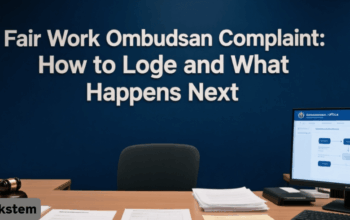Retail businesses often run outside the usual 9–5, so shiftwork is common. Under Australia’s Retail Award, employees working nights, weekends or early mornings get extra protections and pay. In this post we break down who’s covered by the Retail Award, what “shiftwork” means, common penalty rates, rostering rules and legal obligations like breaks and notice. We also look at the tools that can help automate rostering and keep in compliance from the start.
Who is Covered by the Retail Award?
The Retail Award applies to workers in the general retail industry, meaning shops that sell or hire goods/services for personal or household use. Examples of covered roles include:
- Sales and store staff: checkout operators, sales assistants, shelf-stacking and stock handlers.
- Managers and supervisors: department and store managers, service supervisors.
- Specialty retail trades: in-store butchers, bakers, florists, appliance repairers, etc.
- Others: trolley collectors, delivery drivers for newsagents, retail travel sales agents, back-office retail clerks.
- Labour hire: Employees placed by labour-hire firms into retail businesses are also covered.
However, the Retail Award excludes certain industries. For example, employees in hair and beauty salons, pharmacies, fast-food outlets, motor vehicle dealerships, cafes/restaurants or warehousing/distribution work under different awards. Stand-alone nurseries, pharmacies, and traditional manufacturing are also outside the Retail Award. In other words, if a staff member’s duties fall under another modern award (e.g. the Hair & Beauty Award or Fast Food Award), the Retail Award doesn’t apply.
What is Shift Work?
In retail, “shiftwork” generally means work at night or very early morning. Under the Retail Award, shift work is defined as any shift starting at/after 6:00pm one day and finishing before 5:00 am the next day (except for bakery production, which has a slightly different rule). Importantly, an employee is only considered a shiftworker if they are rostered on this type of shift for an entire roster period. For example, if an employee works every night shift (e.g. 4am starts) in a week, they count as a shiftworker and get shiftworker pay rates. But if a roster mixes some early starts with some day work, they may be treated as a non-shiftworker for that period.
Shiftworkers are entitled to higher penalty rates (see below). Non-shiftworkers who happen to work a night or weekend shift still get penalty pay, but usually at a lower percentage. (Casuals always get a 25% loading on base rate plus any applicable penalties.)
What are the Common Penalty Rates in Retail?
Working outside standard hours brings penalty rates. Under the Retail Award, shiftworkers and non-shiftworkers have different rules. For casual shiftworkers, penalty rates are:
- Mon–Fri (after 6pm): 155% of base rate (this includes the 25% casual loading).
- Saturday: 175% of base rate.
- Sunday: 200% of base rate.
- Public holiday: 250% of base rate.
By contrast, casual non-shiftworkers (e.g. someone who usually works day shifts but does an evening) get: 150% after 6pm Mon–Fri, 150% on Saturdays, 175% on Sundays, and 250% on public holidays. Full-time and part-time employees get the same percentage rates (just without the extra 25% casual loading). For example, a casual shiftworker’s Sunday shift is 200%, while a day-working casual’s Sunday shift is 175%.
Key takeaway: Penalties increase on nights and weekends. Be sure to apply the higher rates for any employees classified as shiftworkers.
How to Roster for Shiftworkers in Retail?
The Retail Award has strict rostering rules to ensure staff get enough time off. Key points include:
- Roster cycle: Usually up to 4 weeks. The Award states “a roster period cannot exceed 4 weeks” unless both parties agree.
- Days per week: You generally cannot roster an employee more than 5 days in a week. (If you do 6 days in one week of a two-week cycle, the other week must be 4 days or less.)
- Consecutive days off: Employees must get at least 2 consecutive days off each week (or 3 off per 2-week cycle). If someone works Sundays regularly, they should get at least 3 consecutive days off in a 4-week span.
- Roster publication: The roster must be easily accessible to staff (e.g. on a staff noticeboard or an online schedule). It must show the days, start and finish times, and total hours for each employee.
When changing rosters, remember the Award rules: permanent roster changes require at least 7 days’ written notice. If an employee objects, notice must then be at least 14 days. (Employees can seek dispute resolution if needed.) You cannot change a roster solely to avoid paying shift penalties or penalty rates – if you do, you must still pay the higher rates as if the original roster applied.
What are the break entitlements in Retail?
The Retail Award sets specific break entitlements for shifts, which must be built into the roster:
- Shifts under 4 hours: no paid breaks required.
- 4–5 hours: one 10-minute paid rest break.
- Over 5–7 hours: one 10-minute paid rest break and one unpaid meal break (30–60 minutes).
- 7–9 hours: two 10-minute paid rest breaks and one unpaid meal break.
- 10+ hours: two 10-minute paid rests and two unpaid meal breaks.
The Award also states it is not allowed to require an employee to work more than 5 hours straight without a meal break, nor take breaks in the first or last hour of a shift. All break times should be recorded in the roster and be meaningful.
Finally, staff must have adequate rest between shifts. The Award mandates a minimum 12-hour break between finishing one shift and starting the next. If an employee starts another shift with less than 12 hours off, any time worked beyond the 12th hour must be paid at 200% of the minimum rate. In practice, this means avoid rostering someone for a late-night shift and then an early-morning shift without at least 12 hours off, or you’ll owe double pay for the extra hours.
To Wrap Up
Managing all these rules can be complex. Leveraging an intuitive rostering software will help you reduce mistakes and save time on compliance. Using available tools like Workstem can automatically generate compliant shift schedules, calculate the correct Award penalties, and ensure required breaks and days off are built in. Staff can receive shift reminders via the app, and you can handle shift swap requests easily all from a mobile app.
How Does Workstem Help?
Simplify your payroll process and ensure accurate pay rates with Workstem’s automated payroll system. Our pre-built modern award interpretation software covers 122+ awards and 34 EBAs, and keeps you up-to-date with penalty rates and other award entitlements.
Choose between our Standard and Advanced plans, and enjoy a range of benefits such as Fair Work compliance, an employee self-service App, and custom rule set. We have integrated our system with Xero and NetSuite as well to bring you a complete HR SaaS solution for your business.
Book a free demo with our payroll experts. Experience the efficiency and accuracy of Workstem today!
FAQs: About Shift Work Under the Retail Award
Q1: Who is covered by the Retail Award vs other awards?
A1: The Retail Award covers most employees in “general retail” shops – clothing stores, supermarkets, electronics, etc. Covered roles include sales assistants, cashiers, stock staff and store managers. But it does not cover workers in hair salons, pharmacies, fast-food outlets, motor vehicle sales or cafes. If an employee’s duties fall under another modern award (e.g. Hair & Beauty Award), that award applies instead. Always check Fair Work’s award finder if you’re unsure.
Q2: How much notice do I need to change a roster?
A2: You should generally give at least 7 days written notice for any permanent change to the published roster. If an employee doesn’t agree to the change, the notice period extends to 14 days. Note: there is no minimum notice for issuing the initial roster (though in practice many retailers give a week’s notice), but any change after that follows the 7-day rule. For one-off urgent changes (e.g. due to unexpected absence), the Award allows some flexibility, but it’s best to avoid short-notice re-rosters wherever possible.
Q3: What breaks are staff entitled to on a long shift?
A3: Under the Retail Award, employees get scheduled paid rest breaks and unpaid meal breaks depending on shift length. For example, a 6-hour shift means at least one 10‑minute paid break plus a 30-minute unpaid meal break. An 8-hour shift requires two 10‑minute paid breaks and one meal break. Importantly, no one should work more than 5 hours without a 30-minute break, and all breaks must be a reasonable time into the shift (not right at the start or end).
Q4: What if an employee is rostered overnight?
A4: If a shift starts at/after 6pm and goes past midnight, it’s “shiftwork” under the Award. Shiftworkers earn higher penalty rates (155–200% on nights/weekends). Also remember the 12‑hour break rule: avoid rostering someone to work late at night and then back in the morning with fewer than 12 hours rest, or pay extra as required.
Read more:
How to Keep Your Payroll System Updated with General Retail Industry Award Changes?
When to Pay Overtime under the Retail Award: Triggers and Rates








